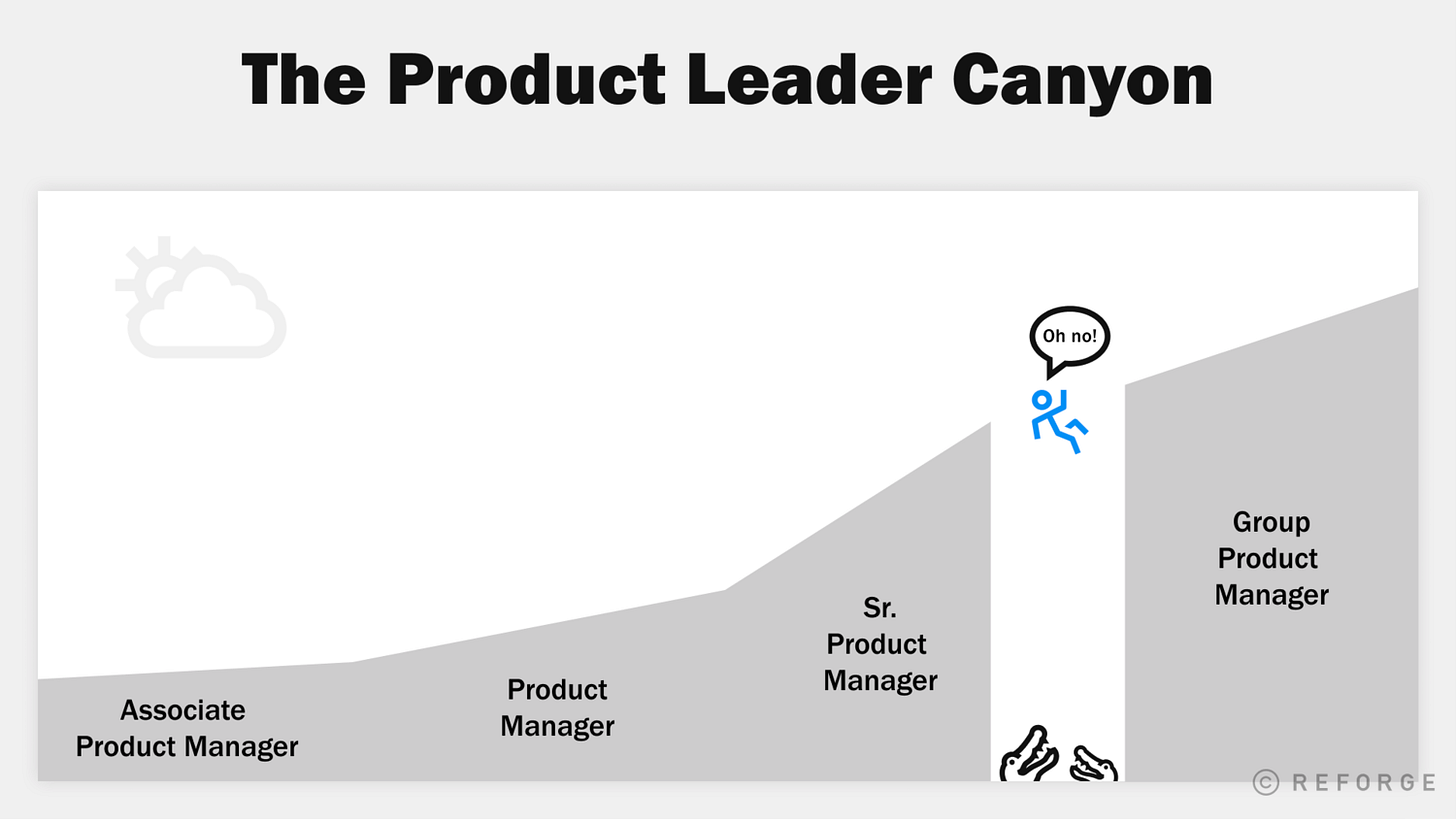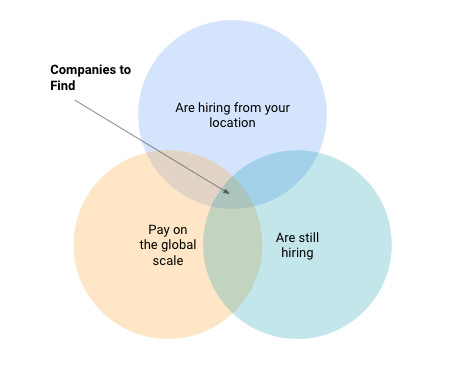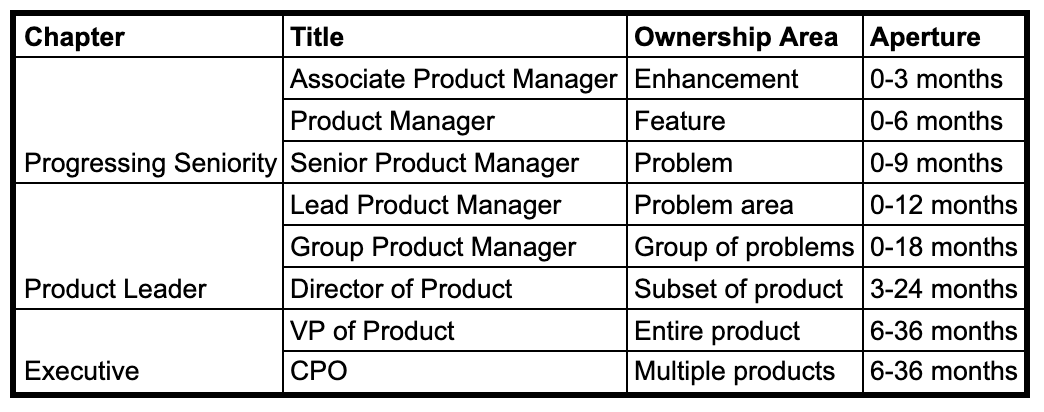The PM Career Ladder: Your Unofficial Guide
With Amplitude’s VP of Product
In Today’s Newsletter:
The Trimodal Distribution of Salaries
Paid corner: Your Unofficial Companion to the PM Career Ladder
The Trimodal Distribution of Salaries
Earlier this week, I wrote about Gergely Orosz’s concept of the Trimodal distribution of salaries.
I can’t believe this isn’t part of the regular vernacular. I think that’s because he wrote about it in the context of software engineers in Europe.
But in my experience, this applies to almost every job - engineering and PM, tech and non-tech.
Let’s take the example of VP of a bank. If you work at the local credit Union in the US, you might earn $150K. If you become VP at a state chain, you might earn $250K. But if you become VP at a global firm, you can easily earn $1M.
The same applies to PMs. An early career PM at a startup might earn $95K. A similarly tenured PM at a well-funded startup might earn $170K. And at the big FAANG companies, a similarly experienced PM could have total compensation of more than $350K.
This trimodal distribution is everywhere.
A lot of people are happy in their job at tier 1 or tier 2. But too many don’t even know about tier 3. Let’s make this part of the vernacular.
ICYMI - my recent writing on social media:
Product Management: History of impact sizing
The PM Career Ladder: Your Unofficial Guide
Product managers tend to be an ambitious bunch. It’s rare to find a PM who doesn’t want to grow in their career as fast as possible.
So, a question that’s always top of mind is, “how can I move ahead in my career?”
Bringing In An Expert
While I’ve made it to the Director stage, I wanted to tap an expert to give you context beyond that. So, in today’s piece, I’ve teamed up with one of my favorite product creators, Ibrahim Bashir, who writes the fabulous Run the Business newsletter.
Ibrahim has been a VP of Product Management at Amplitude ($1.3B market cap public company) for the past 2.5 years. Before that, he was a VP of PM at Box, Director of Engineering at Twitter, and Senior Manager at Amazon.
He knows a thing or two about progressing in your career.
So what are the steps in a PM’s career?
The PM Career Ladder
There are about 5 or 9 steps depending on the track.
Lenny Rachitsky provided a great resource to the product community by collecting PM career ladders at 10s of companies last year. It can be distilled into two major tracks:
There’s an IC track and a Managerial track. Not every company has the IC track, but more than half of the bigger one’s do.
What exactly is needed at each stage?
Different Skills
As you move up this ladder, you need to master totally new skills. While there’s tons of variation, it generally looks something like this:
There are two things we want to highlight here.
The first is that as you go up in the ladder, your ability to do the items below doesn’t really decrease.
It’s difficult to effectively lead in product management if you don’t have that base of being able to ship features, contextualize them versus past features, consider features versus other types of bets, etc.
The second takeaway is that the big axis shift for you as you progress is from execution to vision. If you’re early in your PM career, as much as strategy and vision do matter, the value you are uniquely positioned to provide relative to others in the company is execution.
So, being able to ship features on time, with attention to detail, great design, and reach the goals they set out to is crucial. There’s a reason that ‘ship feature’ sticky has big text. It’s important at each and every level, and is the rock foundation upon which everything rests.
How might we further sharpen our pencils on this?
The Three Key Phases
A few years back, Fareed Mosavat (former Director of Product at Slack) and Casey Winters (former CPO at Eventbrite) identified that one stage is particularly tough - the jump from senior PM to product leader.
They called it the Product Leader Canyon:

We couldn’t agree more. Inspired by that, we think there might be one more jump to add - moving from a product leader to product executive. Because again, at this step, your aperture changes dramatically.
So we might say, really, there are three stages:
Progressing Seniority
The Product Leader Canyon
Manager to Executive
The progressions looks like this:
As you move into the executive line, you are managing a whole product or multiple products. This makes your skill sets required far broader than just PM.
Today’s Piece
We’ll walk through the “earned secret” tips we have gained from working through these three phases of the PM career.
Consider this the unofficial companion to the career ladder your company gave you. This is the advice for accelerating through your career ladder that you used to get at in the cafeteria before everyone went hybrid/ remote. We’ll walk through:
What are the key “jumps” from a PM role perspective?
How does your approach need to evolve as you climb?
How do you learn these skills before you need them?
Let’s get into it.
Keep reading with a 7-day free trial
Subscribe to Product Growth to keep reading this post and get 7 days of free access to the full post archives.






